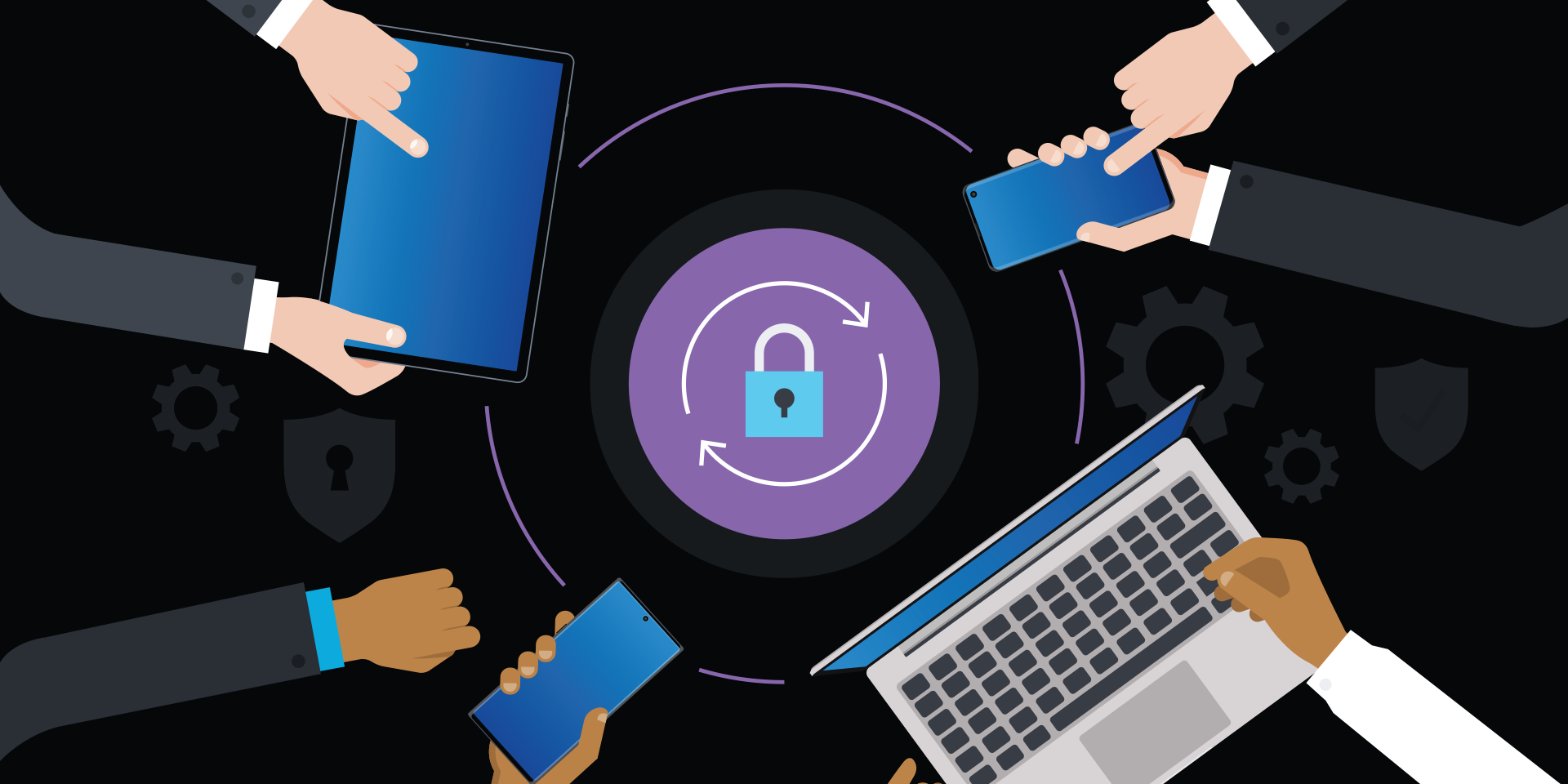Operating a small business isn’t easy. I compete against larger, more well-known brands with more employees and funding to get the job done. I could quickly get discouraged, but I found I also have advantages. I’m not stuck in endless meetings and bogged down by tedious corporate processes. I can adopt the latest hardware and cloud-based software to have systems that rival the IT sophistication of a larger organization. Because I am a smaller company, I can act faster when market demand changes.
However, that doesn’t mean I can rest on my laurels. I’m always looking for ways to increase my productivity and effectiveness. Here are four strategies that have helped me improve my small business’s productivity and business output.
1. Boost team effectiveness with a weekly meeting-free day
As a small business owner, I need to get more out of my precious resources, and meetings get in the way. Atlassian‘s research found that less than 60 percent of work time is spent productively. It also revealed that, on average, employees spend approximately 31 hours per month in unproductive meetings. I’ve found that I can’t attain a focused, productive state when I only have small blocks of time between appointments. The best thing I’ve done to increase team productivity at our company was to dedicate a single day each week as a meeting-free day.
On this day, the team has no internal meetings. There are no meetings with prospects or clients unless it’s necessary. It doesn’t matter which day you select, but it should be a day where your business is least likely to need to meet with outside vendors, clients and prospects. For me, this day is Friday. But if you’re in another industry, say wedding planning, it may be Monday or Tuesday.
A meeting-free day allows your employees to focus on deep work, the things that differentiate your business. I copied the idea from Meta (Facebook), who started “no-meeting Wednesdays,” and Twilio, who did the same for Fridays. I thought, if the big companies can do it, I can too! With the additional time savings, I was able to complete projects that had been on the back burner, such as launching two podcasts to share insights from my research.

2. Shut the lens on video — at least part of the time
During the pandemic, many organizations adopted a video-first meeting culture to replicate the engagement of in-person interactions. Several years later, employees are experiencing video fatigue. Professor Jeremy N. Bailenson, the founding director of the Stanford Virtual Human Interaction Lab (VHIL), recently wrote a paper that examined the psychological consequences of spending hours per day on conferencing platforms. He found that the amount of eye contact we engage in on video chats and the size of faces on screens is unnatural, and it lacks the subconscious nonverbal cues of in-person meetings.
I also noticed this and more. Endless video meetings meant I sat all day. My 10,000-a-day step count plummeted to 2,000 steps a day. I’ve adopted the viewpoint that “not every meeting has to be a video meeting.” I work with my clients to designate which meetings will be video-required, audio-only or as you wish in the calendar invitation. I use a sit-to-stand desk with an under-the-desk treadmill option to ensure I move more. I’ve also required most of my meetings to be 30 minutes or less.
Time is precious. If you want to improve your mental health, make sure your meetings have an agenda, meet for less time and be more selective about your use of video.
3. Take control of your personal to-do list
Everyone struggles with the endless to-do list that gets longer by the day. I found I frequently had a list of ten or more items I needed to complete in a day. My to-do list was unrealistic, overwhelming and demoralizing. I needed a framework that allowed me to capture and plan tasks.
This system can be physical, digital or a combination of the two. You can use an app like Todoist, the task feature in your calendar systems or specialized project management software. I selected a combination of my electronic calendar and a physical planner. Currently, I’m using the Full Focus system. I chose a method where I capture all my tasks, and then I prioritize the tasks based on a combination of what’s most important to the business and the various deadlines for each project. The Pareto Principle and the Eisenhower method are good frameworks to help you understand what’s important.
I’ve also committed to accomplishing no more than three tasks per day with a list of secondary tasks to complete if time allows. If I happen to finish six or seven tasks, that’s great. If I complete two of the three items on the list, it’s not a failure. Before this system, I never thought I had accomplished enough during any given day.
Other systems I reviewed suggest you can focus on just one task per day, your Most Important Task (MIT). Consider winnowing your daily and weekly list to a manageable set of tasks and defining time slots to work on specific items. I also set aside an hour at the end of the week to plan for the week ahead. This step will help you define what’s essential and banish the overwhelm.
Everyone has more tasks to accomplish than time permits. Select a few things that matter and work on achieving these items each day. I promise you’ll make progress this way.

4. Combine cloud tech, better computing hardware and freelance services to gain significant benefits without a big budget
I specialize in marketing, not IT management. Yet, like most small business owners, I can’t hire an army of IT professionals to operate and secure my business. I needed systems that would help me do more with limited IT resources and a predictable budget. The good news? There are ample choices of hardware and software solutions to help a business accomplish everything.
Securing the business to prevent downtime from malware and ransomware was a key concern for me. I minimized part of my security risk by selecting PC and mobile solutions (smartphones and tablets) built with embedded hardware-level security. I added device management software to wipe any lost devices and automate remote security updates remotely. Adopting two cloud storage solutions allowed me to back up my data in two places and securely access critical files from any location. Overall, it’s easier to manage, more secure and seamless for our team. The software that comes with these new devices also allows us to stay ahead of the support curve with predictive technology that detects issues before they become problems.
Mobile device management for beginners
Get started with MDM so your organization can spend less and do more — securely and efficiently. Download Now
Faster processors, cellular wireless connectivity, better cameras and AI technology in newer smartphones and PCs allow you to do more things faster. There’s no more waiting for system wakeups, slow load times or hunting around for an open Wi-Fi connection. For example, the latest smartphone technology allows me to capture high-resolution images and video at tradeshows, even in low light, to share on social. 5G connectivity allows me to share content wherever I am and seamlessly connect with clients via video. Enhanced noise cancellation in my PC, smartphone and collaboration apps also improves our audio quality for podcasting and videoconferencing outside the office.
As I launched several new podcasts with websites, I turned to online freelancer services such as 99designs for my logo, Wix for website development and Fiverr for podcast editing. These are essential services that need to be done well but don’t differentiate the business. You should look for areas where technology allows you to focus on your core skill. The right software and hardware level the playing field between smaller and larger businesses.
These are just a few of my strategies to increase our productivity. I also listen to podcasts such as The Productivity Show, Focus on This and It’s About Time to keep current with the latest tips and strategies. For books, I would recommend reading Cal Newport’s Deep Work, James Clear’s Atomic Habits and Greg McKeown’s Essentialism.
Get exclusive discounts, financing and other deals on Samsung solutions for your small business. Not sure where to start? Get your free guide to matching the right smartphone with your business and employee needs.









